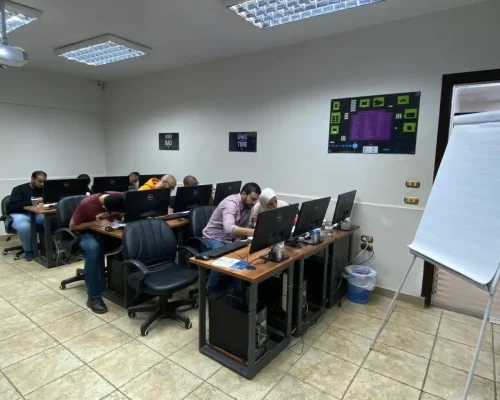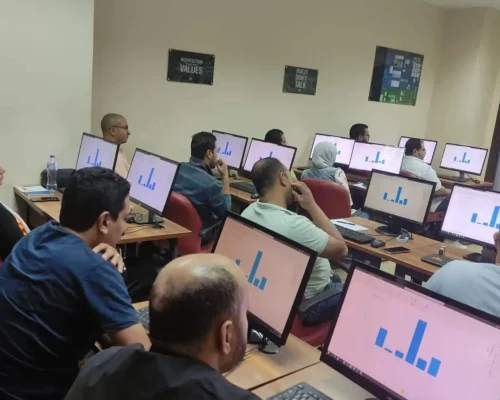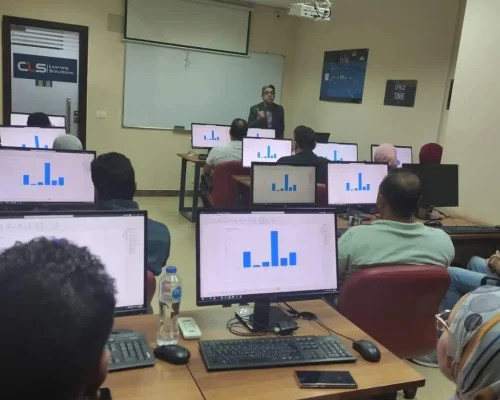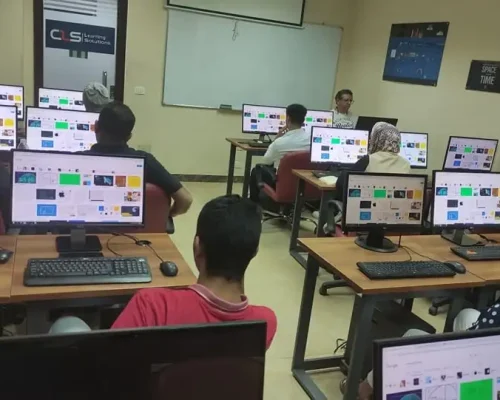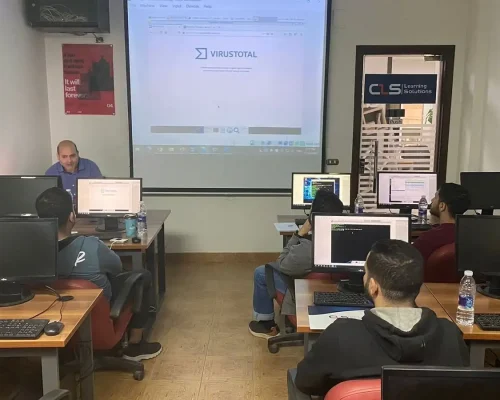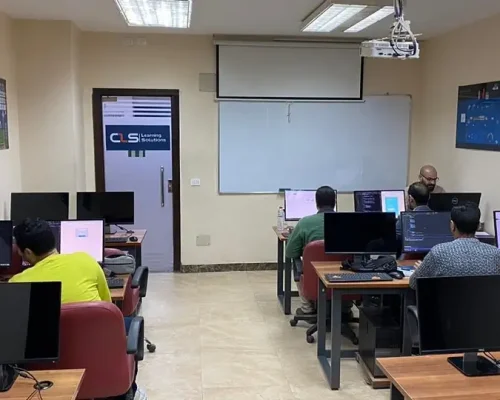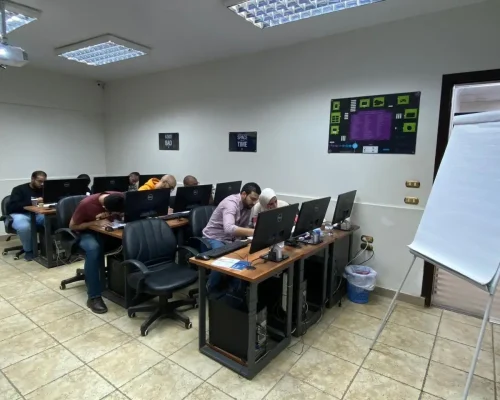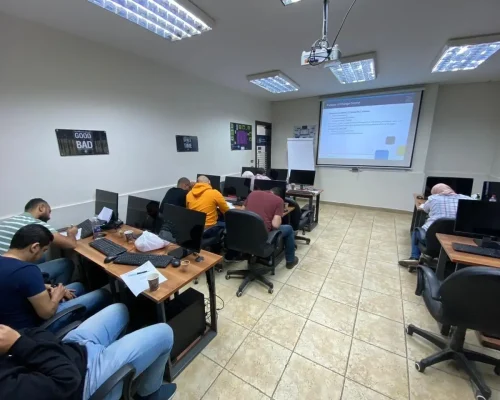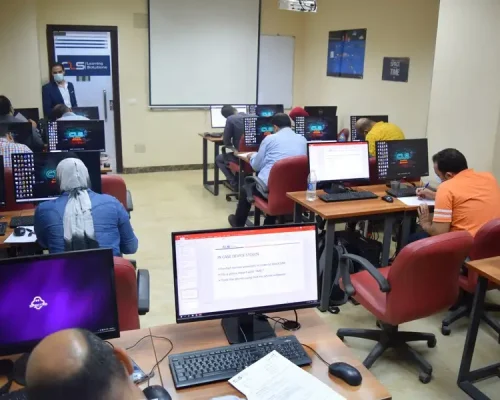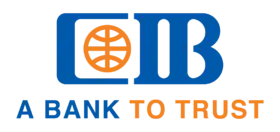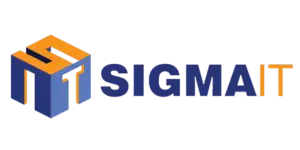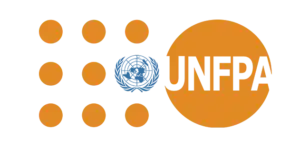Describing Information Security Concepts
- Information Security Overview
- Assets, Vulnerabilities, and Countermeasures
- Managing Risk
- Vulnerability Assessment
- Understanding Common Vulnerability Scoring System (CVSS)
Describing Common TCP/IP Attacks
- Legacy TCP/IP Vulnerabilities
- IP Vulnerabilities
- Internet Control Message Protocol (ICMP) Vulnerabilities
- TCP Vulnerabilities
- User Datagram Protocol (UDP) Vulnerabilities
- Attack Surface and Attack Vectors
- Reconnaissance Attacks
- Access Attacks
- Man-in-the-Middle Attacks
- Denial of Service and Distributed Denial of Service Attacks
- Reflection and Amplification Attacks
- Spoofing Attacks
- Dynamic Host Configuration Protocol (DHCP) Attacks
Describing Common Network Application Attacks
- Password Attacks
- Domain Name System (DNS)-Based Attacks
- DNS Tunneling
- Web-Based Attacks
- HTTP 302 Cushioning
- Command Injections
- SQL Injections
- Cross-Site Scripting and Request Forgery
- Email-Based Attacks
Describing Common Endpoint Attacks
- Buffer Overflow
- Malware
- Reconnaissance Attack
- Gaining Access and Control
- Gaining Access via Social Engineering
- Gaining Access via Web-Based Attacks
- Exploit Kits and Rootkits
- Privilege Escalation
- Post-Exploitation Phase
- Angler Exploit Kit
Describing Network Security Technologies
- Defense-in-Depth Strategy
- Defending Across the Attack Continuum
- Network Segmentation and Virtualization Overview
- Stateful Firewall Overview
- Security Intelligence Overview
- Threat Information Standardization
- Network-Based Malware Protection Overview
- Intrusion Prevention System (IPS) Overview
- Next Generation Firewall Overview
- Email Content Security Overview
- Web Content Security Overview
- Threat Analytic Systems Overview
- DNS Security Overview
- Authentication, Authorization, and Accounting Overview
- Identity and Access Management Overview
- Virtual Private Network Technology Overview
- Network Security Device Form Factors Overview
Deploying Cisco ASA Firewall
- Cisco ASA Deployment Types
- Cisco ASA Interface Security Levels
- Cisco ASA Objects and Object Groups
- Network Address Translation
- Cisco ASA Interface Access Control Lists (ACLs)
- Cisco ASA Global ACLs
- Cisco ASA Advanced Access Policies
- Cisco ASA High Availability Overview
Deploying Cisco Firepower Next-Generation Firewall
- Cisco Firepower NGFW Deployments
- Cisco Firepower NGFW Packet Processing and Policies
- Cisco Firepower NGFW Objects
- Cisco Firepower NGFW Network Address Translation (NAT)
- Cisco Firepower NGFW Prefilter Policies
- Cisco Firepower NGFW Access Control Policies
- Cisco Firepower NGFW Security Intelligence
- Cisco Firepower NGFW Discovery Policies
- Cisco Firepower NGFW IPS Policies
- Cisco Firepower NGFW Malware and File Policies
Deploying Email Content Security
- Cisco Email Content Security Overview
- Simple Mail Transfer Protocol (SMTP) Overview
- Email Pipeline Overview
- Public and Private Listeners
- Host Access Table Overview
- Recipient Access Table Overview
- Mail Policies Overview
- Protection Against Spam and Graymail
- Anti-virus and Anti-malware Protection
- Outbreak Filters
- Content Filters
- Data Loss Prevention
- Email Encryption
Deploying Web Content Security
- Cisco Web Security Appliance (WSA) Overview
- Deployment Options
- Network Users Authentication
- Secure HTTP (HTTPS) Traffic Decryption
- Access Policies and Identification Profiles
- Acceptable Use Controls Settings
- Anti-Malware Protection
Deploying Cisco Umbrella
- Cisco Umbrella Architecture
- Deploying Cisco Umbrella
- Cisco Umbrella Roaming Client
- Managing Cisco Umbrella
- Cisco Umbrella Investigate Overview and Concepts
Explaining VPN Technologies and Cryptography
- VPN Definition
- VPN Types
- Secure Communication and Cryptographic Services
- Keys in Cryptography
- Public Key Infrastructure
Introducing Cisco Secure Site-to-Site VPN Solutions
- Site-to-Site VPN Topologies
- IPsec VPN Overview
- IPsec Static Crypto Maps
- IPsec Static Virtual Tunnel Interface
- Dynamic Multipoint VPN
- Cisco IOS FlexVPN
Deploying Cisco IOS VTI-Based Point-to-Point IPsec VPNs
- Cisco IOS VTIs
- Static VTI Point-to-Point IPsec Internet Key Exchange (IKE) v2 VPN Configuration
Deploying Point-to-Point IPsec VPNs on the Cisco ASA and Cisco Firepower NGFW
- Point-to-Point VPNs on the Cisco ASA and Cisco Firepower NGFW
- Cisco ASA Point-to-Point VPN Configuration
- Cisco Firepower NGFW Point-to-Point VPN Configuration
Introducing Cisco Secure Remote Access VPN Solutions
- Remote Access VPN Components
- Remote Access VPN Technologies
- Secure Sockets Layer (SSL) Overview
Deploying Remote Access SSL VPNs on the Cisco ASA and Cisco Firepower NGFW
- Remote Access Configuration Concepts
- Connection Profiles
- Group Policies
- Cisco ASA Remote Access VPN Configuration
- Cisco Firepower NGFW Remote Access VPN Configuration
Explaining Cisco Secure Network Access Solutions
- Cisco Secure Network Access
- Cisco Secure Network Access Components
- AAA Role in Cisco Secure Network Access Solution
- Cisco Identity Services Engine
- Cisco TrustSec
Describing 802.1X Authentication
- 802.1X and Extensible Authentication Protocol (EAP)
- EAP Methods
- Role of Remote Authentication Dial-in User Service (RADIUS) in 802.1X Communications
- RADIUS Change of Authorization
Configuring 802.1X Authentication
- Cisco Catalyst® Switch 802.1X Configuration
- Cisco Wireless LAN Controller (WLC) 802.1X Configuration
- Cisco Identity Services Engine (ISE) 802.1X Configuration
- Supplicant 802.1x Configuration
- Cisco Central Web Authentication
Describing Endpoint Security Technologies
- Host-Based Personal Firewall
- Host-Based Anti-Virus
- Host-Based Intrusion Prevention System
- Application Whitelists and Blacklists
- Host-Based Malware Protection
- Sandboxing Overview
- File Integrity Checking
Deploying Cisco Advanced Malware Protection (AMP) for Endpoints
- Cisco AMP for Endpoints Architecture
- Cisco AMP for Endpoints Engines
- Retrospective Security with Cisco AMP
- Cisco AMP Device and File Trajectory
- Managing Cisco AMP for Endpoints
Introducing Network Infrastructure Protection
- Identifying Network Device Planes
- Control Plane Security Controls
- Management Plane Security Controls
- Network Telemetry
- Layer 2 Data Plane Security Controls
- Layer 3 Data Plane Security Controls
Deploying Control Plane Security Controls
- Infrastructure ACLs
- Control Plane Policing
- Control Plane Protection
- Routing Protocol Security
Deploying Layer 2 Data Plane Security Controls
- Overview of Layer 2 Data Plane Security Controls
- Virtual LAN (VLAN)-Based Attacks Mitigation
- Spanning Tree Protocol (STP) Attacks Mitigation
- Port Security
- Private VLANs
- Dynamic Host Configuration Protocol (DHCP) Snooping
- Address Resolution Protocol (ARP) Inspection
- Storm Control
- MACsec Encryption
Deploying Layer 3 Data Plane Security Controls
- Infrastructure Antispoofing ACLs
- Unicast Reverse Path Forwarding
- IP Source Guard
Deploying Management Plane Security Controls
- Cisco Secure Management Access
- Simple Network Management Protocol Version 3
- Secure Access to Cisco Devices
- AAA for Management Access
Deploying Traffic Telemetry Methods
- Network Time Protocol
- Device and Network Events Logging and Export
- Network Traffic Monitoring Using NetFlow
Deploying Cisco Stealthwatch Enterprise
- Cisco Stealthwatch Offerings Overview
- Cisco Stealthwatch Enterprise Required Components
- Flow Stitching and Deduplication
- Stealthwatch Enterprise Optional Components
- Stealthwatch Enterprise and ISE Integration
- Cisco Stealthwatch with Cognitive Analytics
- Cisco Encrypted Traffic Analytics
- Host Groups
- Security Events and Alarms
- Host, Role, and Default Policies
Describing Cloud and Common Cloud Attacks
- Evolution of Cloud Computing
- Cloud Service Models
- Security Responsibilities in Cloud
- Cloud Deployment Models
- Common Security Threats in Cloud
- Patch Management in the Cloud
- Security Assessment in the Cloud
Securing the Cloud
- Cisco Threat-Centric Approach to Network Security
- Cloud Physical Environment Security
- Application and Workload Security
- Cloud Management and API Security
- Network Function Virtualization (NFV) and Virtual Network Functions (VNF)
- Cisco NFV Examples
- Reporting and Threat Visibility in Cloud
- Cloud Access Security Broker
- Cisco CloudLock®
- OAuth and OAuth Attacks
Deploying Cisco Stealthwatch Cloud
- Cisco Stealthwatch Cloud for Public Cloud Monitoring
- Cisco Stealthwatch Cloud for Private Network Monitoring
- Cisco Stealthwatch Cloud Operations
Describing Software-Defined Networking (SDN)
- Software-Defined Networking Concepts
- Network Programmability and Automation
- Cisco Platforms and APIs
- Basic Python Scripts for Automation
Lab outline
- Configure Network Settings and NAT on Cisco ASA
- Configure Cisco ASA Access Control Policies
- Configure Cisco Firepower NGFW NAT
- Configure Cisco Firepower NGFW Access Control Policy
- Configure Cisco Firepower NGFW Discovery and IPS Policy
- Configure Cisco NGFW Malware and File Policy
- Configure Listener, Host Access Table (HAT), and Recipient Access Table (RAT) on Cisco Email Security Appliance (ESA)
- Configure Mail Policies
- Configure Proxy Services, Authentication, and HTTPS Decryption
- Enforce Acceptable Use Control and Malware Protection
- Examine the Umbrella Dashboard
- Examine Cisco Umbrella Investigate
- Explore DNS Ransomware Protection by Cisco Umbrella
- Configure Static VTI Point-to-Point IPsec IKEv2 Tunnel
- Configure Point-to-Point VPN between the Cisco ASA and Cisco Firepower NGFW
- Configure Remote Access VPN on the Cisco Firepower NGFW
- Explore Cisco AMP for Endpoints
- Perform Endpoint Analysis Using AMP for Endpoints Console
- Explore File Ransomware Protection by Cisco AMP for Endpoints Console
- Explore Cisco Stealthwatch Enterprise v6.9.3
- Explore Cognitive Threat Analytics (CTA) in Stealthwatch Enterprise v7.0
- Explore the Cisco Cloudlock Dashboard and User Security
- Explore Cisco Cloudlock Application and Data Security
- Explore Cisco Stealthwatch Cloud
- Explore Stealthwatch Cloud Alert Settings, Watchlists, and Sensors
 Business Management
Business Management IT Networks and ITSM
IT Networks and ITSM Data Management
Data Management Software Development
Software Development Digital Transformation
Digital Transformation Graphic Design
Graphic Design





